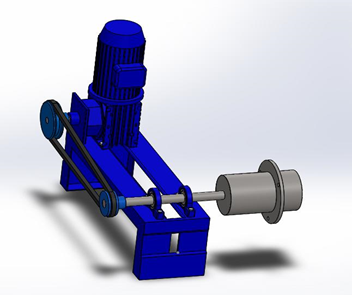Development and performance evaluation of balling disc machine for laboratory applications
Keywords:
Powder, Binder, Machine efficiency, Throughput, Agglomeration efficiency, Hanging rodsAbstract
This paper presents the design, development and performance evaluation of a balling disc machine which was resized for laboratory applications. The unavailability of a balling disc machine in the laboratory, to agglomerate powders for research purposes, prompted this endeavor. Balling disc machines are used to agglomerate powder materials into spherical forms by using an electric motor, shaft, pulleys and driving belts to apply rotational motion to the balling chamber. The balling chamber has three hanging rods that is massing the powders particles together against the balling cylinder wall into larger agglomerates. The objective is to design a balling machine with balling speed not exceeding 30 rpm, construct it and evaluate its performance. The design applied fundamental engineering and mathematical expressions to determine the machine components. The designed machine components values were used to construct it by welding them together and painting. The design presented the shaft length as 157 mm, shaft power as 0.446 KW, shaft diameter as 40 mm, balling cylinder volume as 7.44 x 105 mm3, hanging rods diameter and length as 4.2 mm and 37.5 mm respectively. Four different powders and a binder were used to test the balling machine agglomeration performance. Throughput, agglomerate efficiency and machine efficiency were the parameters evaluated to exhibit the machine’s performance. Powder C reported the highest throughput value of 0.54 g/sec and Power D had the lowest throughput value of 0.24 g/sec. Powder B and C reported the highest agglomeration efficiency values of 92.0% and 92.3% respectively while Powder A and D reported agglomeration efficiency values of 91.5% and 91.2% respectively. Powder B reported the highest machine efficiency value of 87% and Powder A reported the lowest value of 84.3%. The evaluated parameters revealed the effectiveness of the balling disc machine and fulfilled its objective in the production of powder agglomerates. The powder agglomerates produced were found to be within desired requirements and they are suitable for further experimental analysis and applications. The balling disc machine fulfilled its objective and functioned excellently in the laboratory.


